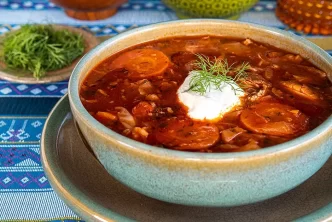For individuals living with diabetes, managing blood sugar levels is a crucial aspect of maintaining overall health. Dinner, as a significant meal of the day, plays a vital role in this process. It’s not just about avoiding sugar but involves understanding the right balance of nutrients to stabilize blood sugar levels and prevent spikes. This article will explore a variety of dinner ideas that are not only nutritious and diabetes-friendly but also delicious and satisfying.
Understanding Diabetes-Friendly Foods
Before diving into meal ideas, it’s essential to understand what makes a food diabetes-friendly. Foods beneficial for diabetes management are typically low in glycemic index (GI), rich in fiber, and contain healthy fats and lean proteins. These types of foods help in slow and steady digestion, which in turn aids in maintaining stable blood sugar levels.
1. Grilled Chicken and Vegetables
Lean proteins like chicken are great for blood sugar control as they have minimal impact on blood sugar levels. Grilling chicken with herbs and spices, and pairing it with a variety of non-starchy vegetables like bell peppers, broccoli, and zucchini, offers a nutrient-rich, low-carb meal.
2. Stir-Fried Tofu with Brown Rice
Tofu is an excellent source of protein for those managing diabetes. A stir-fry using minimal oil, loaded with colorful veggies like carrots, snap peas, and mushrooms, and served over a small portion of brown rice makes for a balanced meal. Brown rice, being a whole grain, has a lower GI compared to white rice.
3. Salmon with Quinoa and Greens
Fatty fish like salmon are rich in omega-3 fatty acids, which are beneficial for heart health – an important consideration for diabetics. Serve grilled or baked salmon with a side of cooked quinoa and a leafy green salad. Quinoa is a high-protein, high-fiber grain, making it a great choice for blood sugar control.
4. Vegetable Lentil Soup
Lentils are an excellent source of plant-based protein and fiber, which can help in regulating blood sugar levels. A hearty lentil soup with a variety of vegetables and a base of low-sodium broth can be both comforting and healthy. Add in herbs and spices for flavor without added sugar or salt.
5. Turkey Chili
Ground turkey is a leaner alternative to beef and can be used in a diabetes-friendly chili recipe. Beans, another key ingredient in chili, are good for blood sugar control due to their fiber content. Serve this with a small portion of whole-grain bread or a side salad.
6. Eggplant Parmesan with Whole-Wheat Pasta
Reinvent the classic eggplant Parmesan by baking the eggplant instead of frying. Use a sugar-free marinara sauce and pair with whole-wheat pasta. Whole-wheat pasta has a lower GI compared to regular pasta, making it a better choice for diabetics.
7. Zucchini Noodles with Pesto and Grilled Chicken
For a low-carb pasta alternative, try zucchini noodles, also known as “zoodles.” Top with homemade pesto and a portion of grilled chicken for a satisfying, blood sugar-friendly meal.
8. Cauliflower Rice Stir-Fry
Cauliflower rice is an excellent low-carb substitute for traditional rice. Make a stir-fry with a variety of vegetables and a lean protein source like shrimp or tofu. This meal is not only low in carbohydrates but also high in nutrients.
9. Baked Cod with Sweet Potato and Asparagus
Fish like cod is a lean protein and pairs well with a small portion of sweet potato, which has a lower GI than regular potatoes. Add a side of grilled or roasted asparagus for a well-rounded meal.
10. Greek Salad with Grilled Chicken or Tofu
A Greek salad made with cucumbers, tomatoes, olives, feta, and a light dressing of olive oil and vinegar can be a light yet satisfying meal. Add grilled chicken or tofu for protein.
Managing Portion Sizes and Carbohydrate Intake
Portion control is crucial in managing diabetes. Even healthy foods can lead to blood sugar spikes if consumed in large quantities. It’s important to be mindful of serving sizes, especially for carbohydrate-rich foods. A balanced plate for a diabetes-friendly meal typically includes half the plate filled with non-st
archy vegetables, a quarter with lean protein, and a quarter with a complex carbohydrate.
Incorporating Fiber and Whole Grains
Fiber plays a key role in blood sugar management by slowing down the absorption of sugar into the bloodstream. Whole grains, vegetables, nuts, and seeds are excellent sources of fiber. Opt for whole-grain versions of bread, pasta, and rice, and include plenty of vegetables in your meals.
Choosing Healthy Fats
Healthy fats are an essential part of a diabetic diet as they have a minimal impact on blood sugar levels. Sources of healthy fats include avocados, nuts, seeds, olive oil, and fatty fish like salmon and mackerel. Including these in your dinner meals can help improve satiety and flavor.
Understanding the Glycemic Index
Foods with a low glycemic index are more favorable for diabetics as they cause a slower rise in blood sugar levels. Foods like whole grains, legumes, most fruits, and non-starchy vegetables have a lower GI. Being mindful of the GI of foods can help in making better dietary choices for diabetes management.
Snack Wisely
If you feel hungry between meals, opt for snacks that won’t spike your blood sugar. Good options include a handful of nuts, a piece of fruit, or a small serving of Greek yogurt.
Stay Hydrated
Drinking enough water is crucial for overall health and can help manage blood sugar levels. Avoid sugary drinks and opt for water, herbal teas, or other unsweetened beverages.
Regular Monitoring
Regularly monitoring blood sugar levels before and after meals can provide feedback on how your body responds to different foods and help in managing your diet more effectively.
Consulting with Healthcare Professionals
Individual nutritional needs can vary, especially when managing a condition like diabetes. It’s advisable to consult with a healthcare provider or a dietitian to create a meal plan that’s tailored to your specific health requirements.
Conclusion
Living with diabetes doesn’t mean you have to give up enjoying food. With the right choices and a focus on balanced, nutritious meals, you can control your blood sugar and enjoy delicious dinners. Embrace the challenge of creating tasty, diabetes-friendly meals as an opportunity to explore new ingredients and cuisines. Remember, the key to successful diabetes management lies in a balanced diet, portion control, and a good understanding of how different foods affect your blood sugar levels. With these principles
in mind, you can not only manage your diabetes effectively but also enhance your overall health and well-being.





